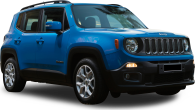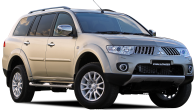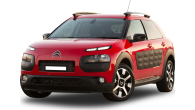Audi’s big banger Q7 relaunched late last year with a slimmer-hipped, lower slung replacement for the old bruiser.
Interestingly there was just the single variant, a 200kW diesel turbo V6 with a six-figure starting price. A few months down the track we’ve finally scored a lower-powered, entry-level Q7.
There are a few bits missing that are standard on the more highly powered version, so with a relatively narrow price difference, is it a good fit for options-box tickers?
Audi Q7 2016: 3.0 TDI Quattro
| Engine Type | Diesel Turbo V6, 3.0L |
|---|---|
| Fuel Type | Diesel |
| Fuel Efficiency | 5.9L/100km (combined) |
| Seating | 7 |
| Price From | $28,160 - $33,880 |
| Safety Rating |
|
Does it represent good value for the price? What features does it come with?
7 / 10
With a price just a few thousand down on the original 200kW version, it almost seems like Audi doesn’t really want you to buy the base model. The price difference is “only” $7600. Remember that bit.
The new Q7 is, thankfully, a lot less imposing than the first generation.
Despite the lower sticker, there is a generous equipment list, particularly on the safety front. Standard are a 10-speaker stereo with DAB+, Bluetooth and dual USB ports, 19-inch alloys, dual-zone climate control, blind spot sensor, reversing camera, keyless entry and start, front and rear parking sensors and park assist, cruise control, electric front seats with driver’s seat memory, satnav, bi-xenon headlights with level adjustment, auto headlights and wipers, leather trim (some real, some not), electric tailgate and tyre-pressure monitoring.
Our car had the optional Audi Connect wifi hotspot feature ($750), metallic paint (at a hefty $2400), Assistance Package - which adds adaptive cruise, active lane assist, pre-sense front, traffic jam assist, collision assist and turn assist ($4075), LED headlights ($2800!), Parking Assistance Package, which adds auto-parking and 360-degree cameras ($1300), full body paint finish ($1300) and interior inlays of high gloss black and oak (an even more mystifying $1690). This brought the total to an eye-watering $110,615.
That’s only $5000 less than a similarly optioned 200kW, which has a few more standard additions, more power obviously, bigger wheels and the full digital “virtual dashboard” from the lovely TT. Of course, neither Q7 is particularly cheap. If you’re willing to lose all-wheel drive, you can have a BMW X5 starting at $86,200 for the rear-wheel drive 170kW 2.0 diesel (but only with five seats).
Audi’s MMI system controls the operation of the retractable 8.3-inch screen that rises majestically from the centre of the dash. MMI looks after the entertainment, satnav and various settings of the car and does a fine job of it, supplemented by a generous touchpad for you to write out your destination with your finger, or choose your radio station.
You can also speak in reasonably normal terms to the nav via voice activation and it will take you to the nearest public toilet, or a petrol station or a nearby Italian restaurant.
Is there anything interesting about its design?
8 / 10
The new Q7 is, thankfully, a lot less imposing than the first generation. That car really did loom and as time went by it became ever more covered in bling. The restraint of the new car is admirable (and good business sense – there’s bound to be a bigger Q8 before long) and looks more like a jacked-up wagon than a full-on SUV.
As is Audi’s wont, there’s lots of aluminium, particularly in the MQB Evo chassis itself (shared with some pretty posh things like the Bentley Bentayga) as well as doors and bonnet.
Despite being smaller, there are still seven seats in the Q7, with a reasonably accessible pair of rear pews providing you’re at least four years old and in possession of two working legs. That third row gets its own air-conditioning vents, cupholders (there are six in total) and somewhere to store your ration of Smarties.
The middle row of seats can be slid fore and aft through about 15cm to liberate or rob the third row of space. The middle rear seat passenger does have to contend with a fairly solid transmission tunnel, however.
Storage is well scattered around the cabin, with four bottle holders, a shallow bin under the centre armrest and a few cubby holes here and there to supplement the good-sized glove box. Audi says the minimum boot volume is 770L with the third row of seats down and 1955 with both rows folded away. With the third row up, an educated guess says somewhere in the region of 300L is still available. There's also ISOFIX child seat mounts for all five rear seats.
The driver gets a clean, clear dashboard with two big dials flanking the central info screen and, as usual, everything is spot-on ergonomically. The dash is considerably less visually weighty than the old car, with full width air-con vents, the middle section blowing diffuse air so you’re not in a windtunnel from a 1980s music video clip.
How practical is the space inside?
What are the key stats for the engine and transmission?
7 / 10
The 160kW is the same basic unit as the 200kW, just with the lower power figure and 500Nm of torque (down from 600Nm) to push its 2135kg frame to 100km/h in 7.3 seconds.
Fuel economy, courtesy of the ZF eight speed automatic and stop-start, is a claimed 5.8L/100km and, it must be said, a fairly unlikely figure to achieve. We saw 9.2L/100km on the dash display, which is still pretty impressive for such a large vehicle.
The Q7 is also rated to tow 3500kg with trailer brakes.
How much fuel does it consume?
Warranty & Safety Rating
What safety equipment is fitted? What safety rating?
7 / 10
Eight airbags, blind-spot sensor, forward-collision mitigation, forward-collision warning, lane-departure warning, rear cross traffic alert and active safety bonnet all add up to the maximum five ANCAP safety stars.
The Assistance Package, which adds adaptive cruise control, active lane assist, pre-sense front (to keep you from crashing into the car in front), collision assist (helps you out with your braking and steering when the car thinks you’re heading into a crash) and turn assist (stops you turning into the path of an oncoming car).
What does it cost to own? What warranty is offered?
What's it like to drive?
8 / 10
It might be down 40kW and 100Nm of torque, but the Q7 still feels pretty nimble for what is a very heavy car, despite its average weight loss of 325kg. The mid-range is very strong, meaning effortless overtaking from rarely more than a toe on the throttle pedal. When your car is this big, the last thing you want to be worrying about is whether it will trip over itself when you’re in the cut and thrust of the school pick up or daily commute.
It’s tidy in the bends and excels in the wet or dry; its stay with us coincided with some truly apocalyptic rain, which the car simply shrugged off.
This is the first Q7 I’ve driven without the air suspension and it was a pleasant surprise. It rode and handled almost as well and you’d have to wonder whether it’s worth the extra outlay. When a press fleet has nothing but air-suspended cars, it makes journalists suspicious; I’m pleased to say there was no need. The only real difference is more noticeable body roll when you’re getting a bit ambitious in the corners. Not really a Q7’s core business.
The steering is quite light but weights up nicely in dynamic mode. It’s tidy in the bends and excels in the wet or dry; its stay with us coincided with some truly apocalyptic rain, which the car simply shrugged off. Needless to say, the cabin is extremely quiet, with just a slight rustle around the wing mirrors and a distant growl from the engine.
Verdict
The 200kW Q7 is a brilliant car and the 160kW is little different. It’s hard to make the economic case for spending less, though, as options will quickly land you in 200kW price territory unless, of course, you’ve stretched yourself for the $96,300 in the first place.
If you have stretched, you’re getting an even better overall car than the excellent BMW X5. The fundamentals of the Q7 are such that you could almost whack the 2.0 TFSI from the A3 in it and it would still be just fine.
Does the Audi Q7's new styling sway you or is the options list too pricey? Tell us what you think in the comments below.
Click here to see more 2016 Audi Q7 pricing and spec info.
Pricing Guides

Range and Specs
| Vehicle | Specs | Price* |
|---|---|---|
| 3.0 TDI Quattro | 3.0L, Diesel, 8 SPEED AUTOMATIC TIPTRONIC | $28,160 - $33,880 |
| 3.0 TDI Quattro (160KW) | 3.0L, Diesel, 8 SPEED AUTOMATIC TIPTRONIC | $28,820 - $34,760 |
.jpg)
.jpg)
.jpg)
.jpg)
.jpg)
.jpg)
.jpg)
.jpg)
.jpg)
.jpg)
.jpg)
.jpg)
.jpg)
.jpg)
.jpg)
.jpg)
.jpg)
.jpg)

.jpg)

.jpg)








































.jpg)
.jpg)
.jpg)

.jpg)

